The Connection Between Art And Mindfulness: Creating Your Healing Environment
Mindfulness isn’t a new invention. It’s been around for centuries, wrapped into spiritual traditions and daily rituals across the world. What’s new is how we’re talking about it, and how badly we need it.
Today, mindfulness is marketed like a quick fix: download this app, light this candle, inhale lavender and suddenly you’ll stop feeling like you’re drowning in emails, bills, and existential dread. Except it doesn’t really work like that.
Mindfulness is presence. It’s the decision, moment by moment, to return to your body, to your breath, to what’s actually here. And here’s the thing most people miss: your environment either makes that practice possible or sabotages it completely.
That’s where art changes everything.
Art isn’t decoration. It’s not the finishing touch you add after buying a sofa. When chosen and placed intentionally, art is medicine. It can soothe a restless mind, anchor you back into your body, and remind you that beauty and stillness exist even when life feels like chaos.
This isn’t about “styling a home.” This is about building an environment that heals.
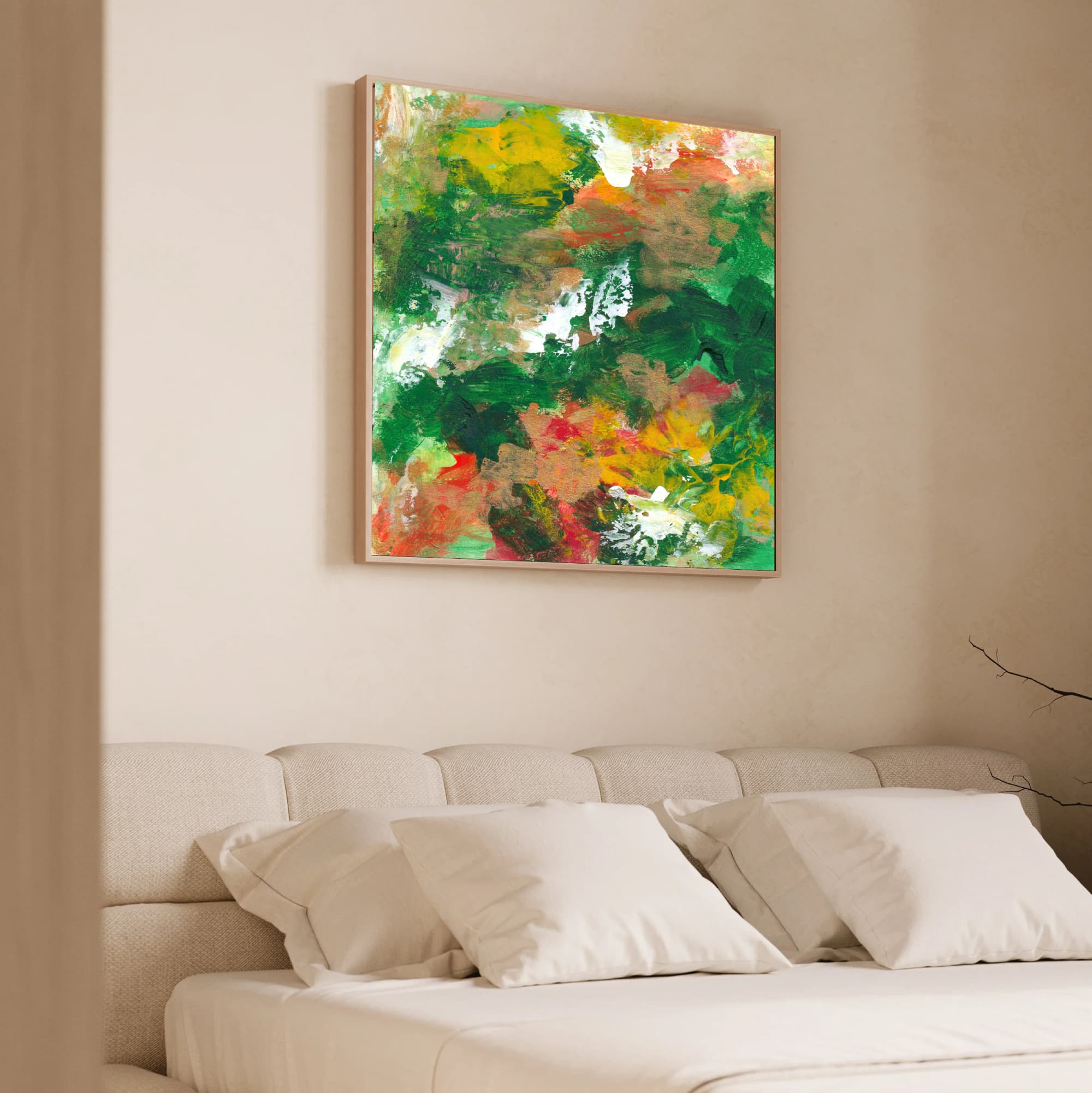

Why Healing Environments Matter More Than Ever
If you’ve ever walked into a room and felt your stomach tighten, you already know how much spaces affect us. Harsh lighting, clutter, soulless décor, they all send signals to your nervous system that say, “stay on guard.”
Now think of the opposite: a place where your shoulders drop the second you walk in. You breathe deeper without being told. Time slows. You don’t even notice why, but you know you don’t want to leave.
That’s the power of the environment.
Hospitals have known this for years. Patients with views of trees heal faster than those staring at blank walls. People in recovery who have access to calming artwork report less anxiety and less pain. This isn’t woo, it’s backed by decades of research.
So why do we treat art in our own homes and workplaces as an afterthought? If hospitals use healing environments as part of recovery, we should absolutely be creating the same conditions where we live and work.
What Mindfulness Really Means
There’s a big misconception that mindfulness is about emptying your mind, thinking of nothing, floating off into bliss. That’s not mindfulness. That’s avoidance dressed up as spirituality.
Mindfulness is showing up to what is real. It’s presence, without judgment. And it’s hard to be present in a space that’s chaotic, lifeless, or purely functional.
-
-
If your space is cluttered, your mind mirrors that chaos.
-
If your walls are blank and sterile, there’s nothing for your attention to rest on.
-
If your environment screams “utility,” you won’t find stillness no matter how many guided meditations you listen to.
-
Mindfulness requires anchors. Art can be one of the strongest anchors you can place in your environment, something that pulls you back, again and again, into the present moment.
Art as an Anchor for Healing
Here’s the truth: art bypasses the part of your brain that wants to explain and control.
When you stand in front of a painting, you don’t need instructions. You don’t rationalise your way into feeling. You just feel.
That’s exactly why art is powerful in healing environments. It takes you out of constant analysis and pulls you into your senses, where healing actually happens.
Art can:
-
-
Slow down your breathing.
-
Bring you back into your body when your head is running wild.
-
Mirror emotions you can’t name, giving you permission to feel them.
-
Offer stillness without demanding anything in return.
-
Healing isn’t found in checklists or productivity hacks. It’s found in moments where the body can soften, where you stop bracing against life. Art creates those conditions.
Colour, Texture, and the Nervous System
Let’s talk practical design for a second. Every colour, every texture, every visual rhythm has an impact on the nervous system.
-
-
Blues and greens calm the mind, reminding us of water and nature.
-
Warm earth tones ground us, linking back to soil, fire, and shelter.
-
Bold contrasts stimulate energy, which can be healing if you’re stuck in numbness or apathy.
-
Soft textures, in paint strokes, layered surfaces, or the grain of a canvas, invite curiosity and comfort.
-
This isn’t about following design rules. It’s about choosing what actually supports your emotional state. Healing doesn’t look the same for everyone. Some people need stillness and muted tones. Others need wild explosions of colour to remember they’re alive.
The question isn’t, “what matches my sofa?” It’s, “what helps me breathe easier in this space?”
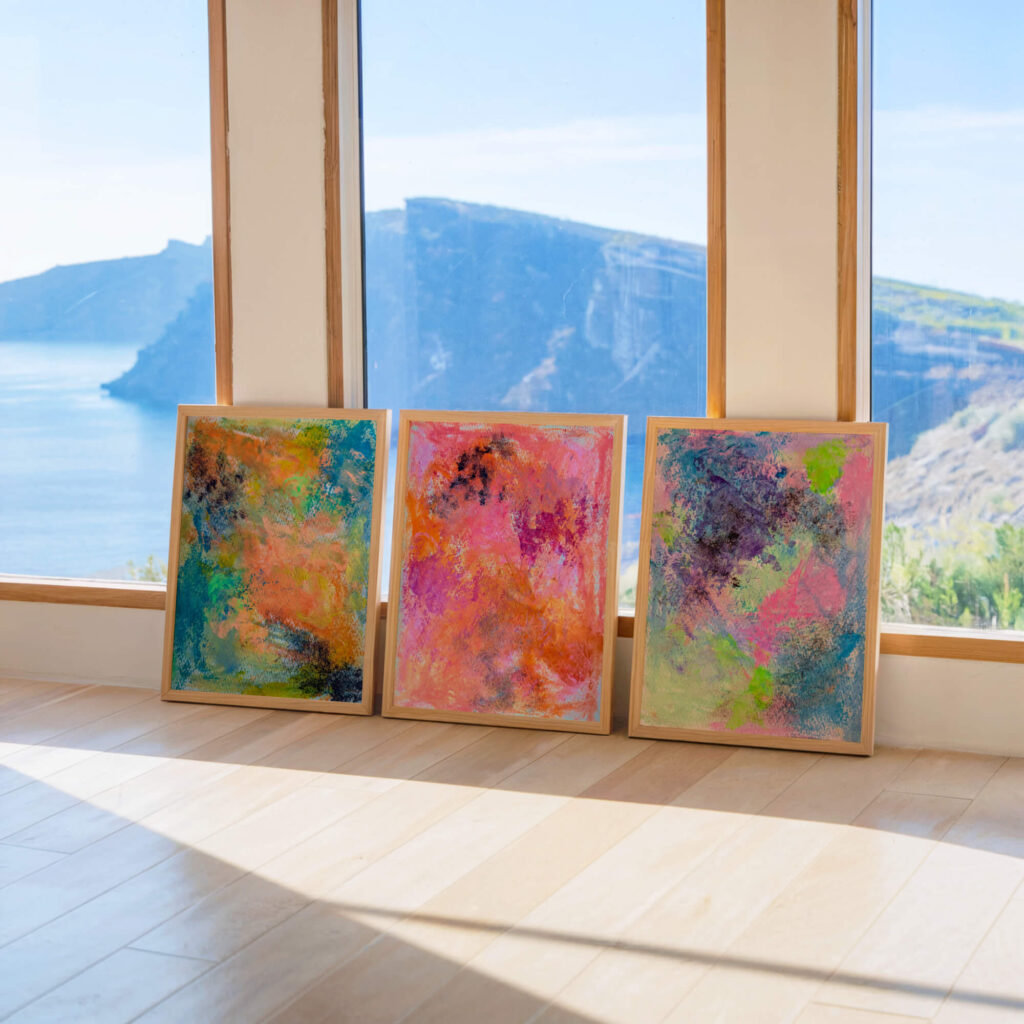
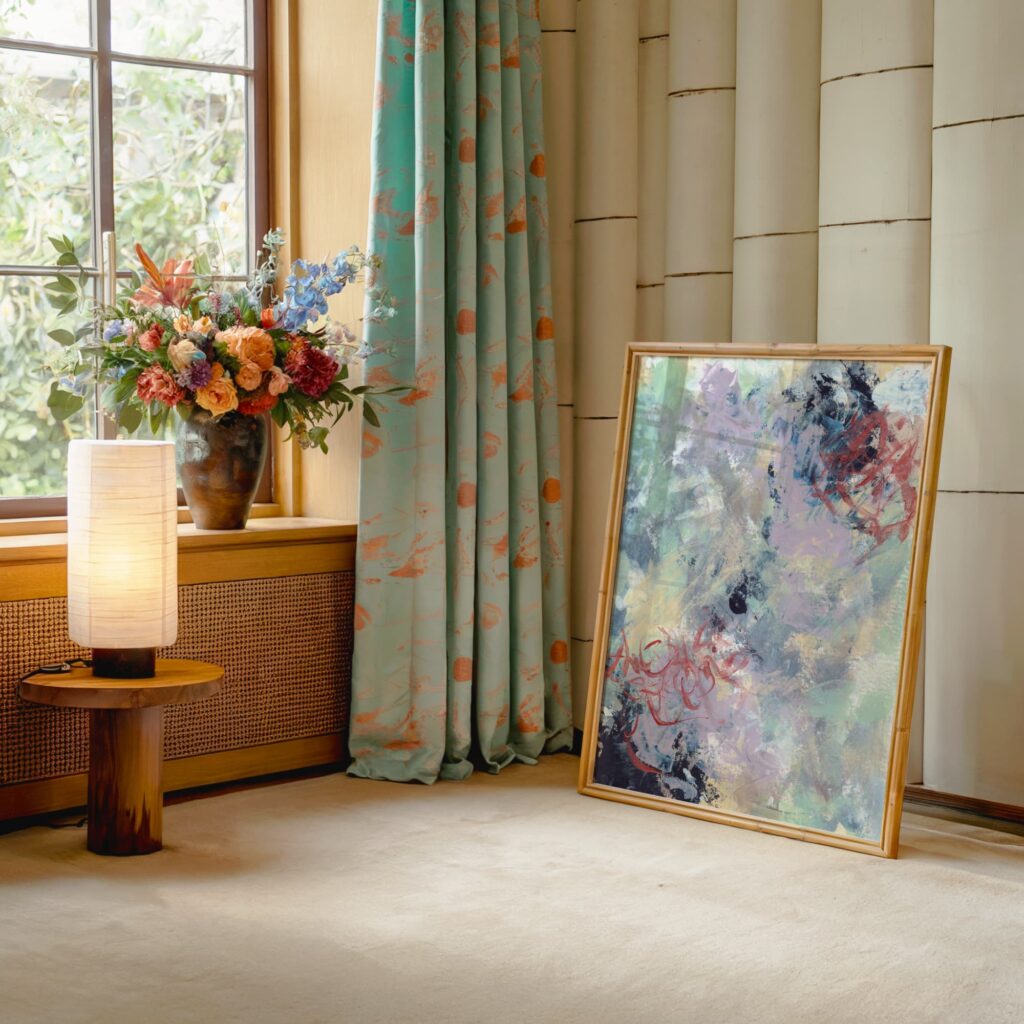
The Difference Between Decoration and Sanctuary
Most people buy art the way they buy cushions. Does it match the curtains? Will it look good in a photo? That’s decoration.
Decoration is shallow. It may look good for visitors, but it doesn’t hold you.
Sanctuary is different. Sanctuary doesn’t care if the colours clash with your rug. Sanctuary asks, “Does this piece allow me to feel safe here? Does it give me space to soften? Does it meet me where I am?”
A healing piece of art doesn’t have to be pretty. Sometimes the most powerful works are raw, carrying both chaos and calm in the same breath. They remind you that contradiction is allowed. They give you permission to stop performing and simply be.
That’s the shift. From surface beauty to deep resonance. From decoration to sanctuary.
Stillness Is a Weapon
In a culture addicted to speed, distraction, and noise, stillness isn’t weakness. Stillness is power.
And art is one of the rare things that hands you stillness without effort. It interrupts the scroll. It stops the endless loop of tasks and performance. It invites pause.
That pause is where healing sneaks in. That pause is the weapon against burnout, anxiety, and the pressure to keep grinding until you collapse.
When people dismiss art as luxury, they’re missing this. Stillness isn’t optional anymore. It’s survival. And art is how we bring that stillness into the very bones of our spaces.
Healing Environments in Homes
Your home is the one place you should be able to exhale fully. But for many people, home is just another source of stress, cluttered, noisy, functional, lifeless.
When you bring mindful art into your home:
-
-
Your living room becomes a place to recover, not just collapse.
-
Your bedroom becomes a true sanctuary, not a storage unit with a bed.
-
Your walls stop being empty or purely decorative, and start reflecting who you really are.
-
I’ve seen collectors tell me their homes felt completely different after hanging one piece. Not just “it looks better,” but “I feel calmer. I feel like I can breathe here.” That’s not decoration. That’s medicine.
If you’re looking to create that shift in your own space, start with the Vault. It’s a private catalogue of canvas prints chosen for emotional depth, not decoration. Every piece is made to turn a room into a sanctuary.
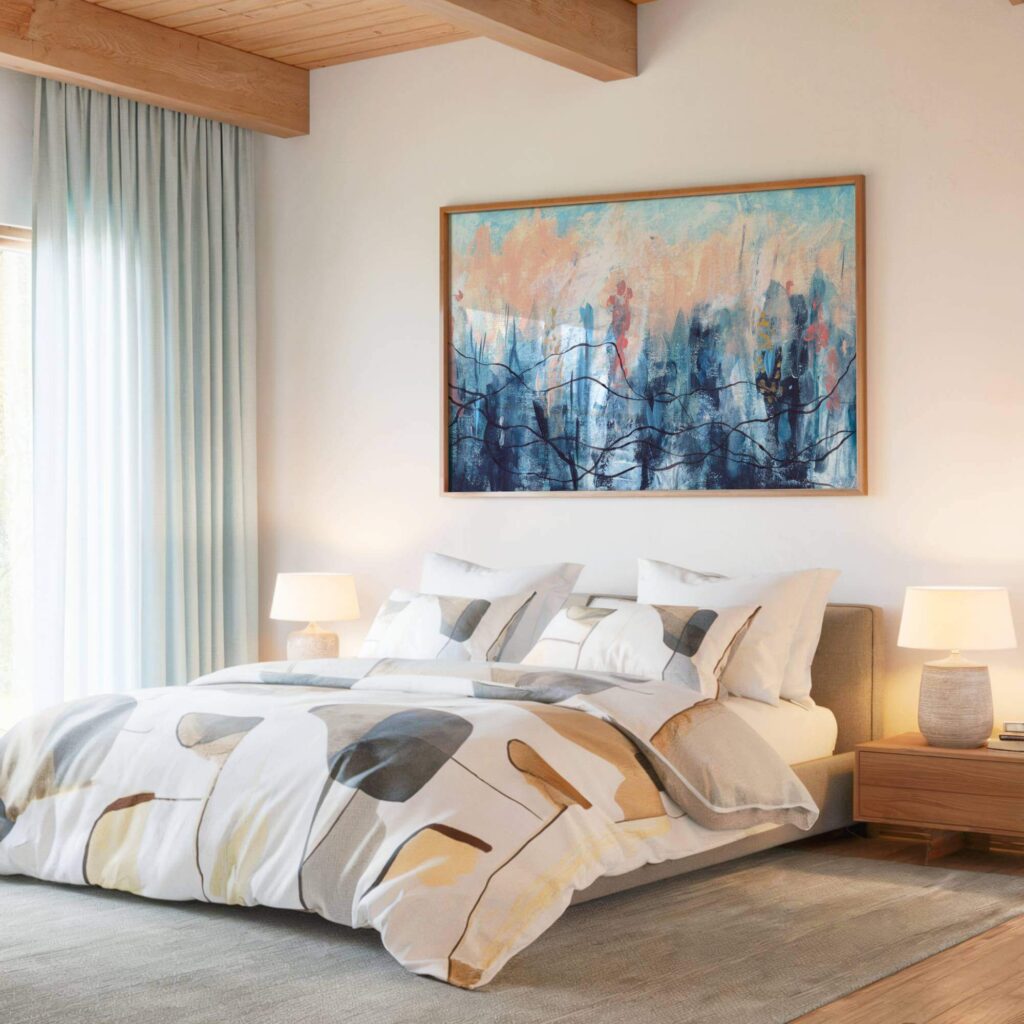
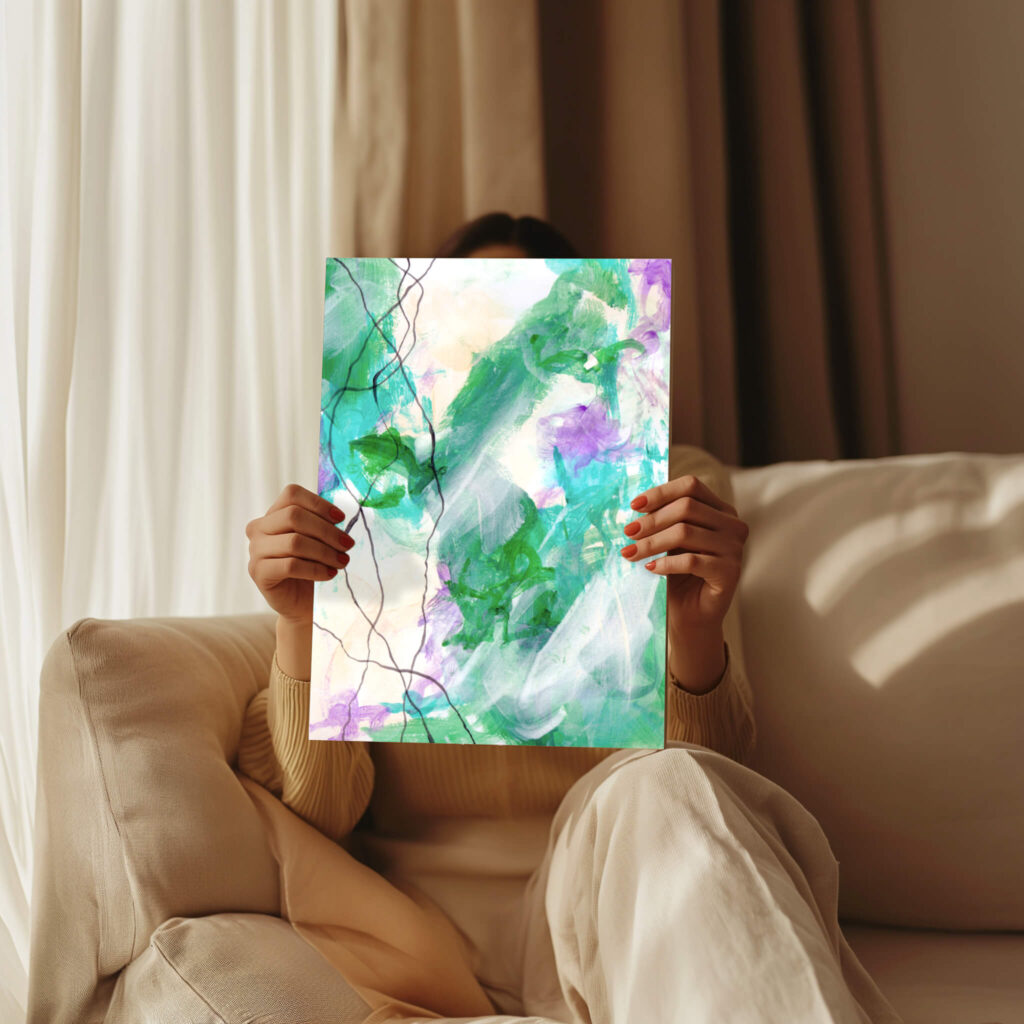
Healing Art in Workspaces
Let’s be blunt: most offices are designed to kill the human spirit. Fluorescent lights. Beige cubicles. Grey carpets. Spaces designed for efficiency, not for people.
But research is clear: mindful environments improve focus, reduce stress, and actually increase productivity. Art in the workplace isn’t just for aesthetics; it’s a business strategy.
-
-
Employees are less burnt out.
-
Meetings feel calmer and less hostile.
-
Creativity increases when people aren’t locked in sensory deprivation chambers.
-
Workspaces that invest in art aren’t indulging. They’re future-proofing. Because no amount of “wellness initiatives” can cover for the fact that people can’t thrive in lifeless environments.
For leaders building mindful offices, Capsule Commission is one of the most intimate ways to bring this into your workspace. One canvas, created from a private reflection, designed to hold presence in the middle of the everyday rush.
Art in Retreats and Hospitality
Think about the best retreat you’ve been to, or the best hotel you’ve stayed in. Was it just about the bed and the food? Or was it the way the space made you feel?
Healing retreats, luxury spas, and even conscious hotels understand that art sets the tone. The wrong environment keeps guests restless. The right environment allows them to finally drop the tension they’ve been carrying for years.
A painting in a retreat hall isn’t decoration. It’s part of the healing protocol.
For retreat spaces and healing environments, my limited editions, like The Last 10, are made to hold stillness at scale. These aren’t decorations. They’re anchors for the work you’re already doing.
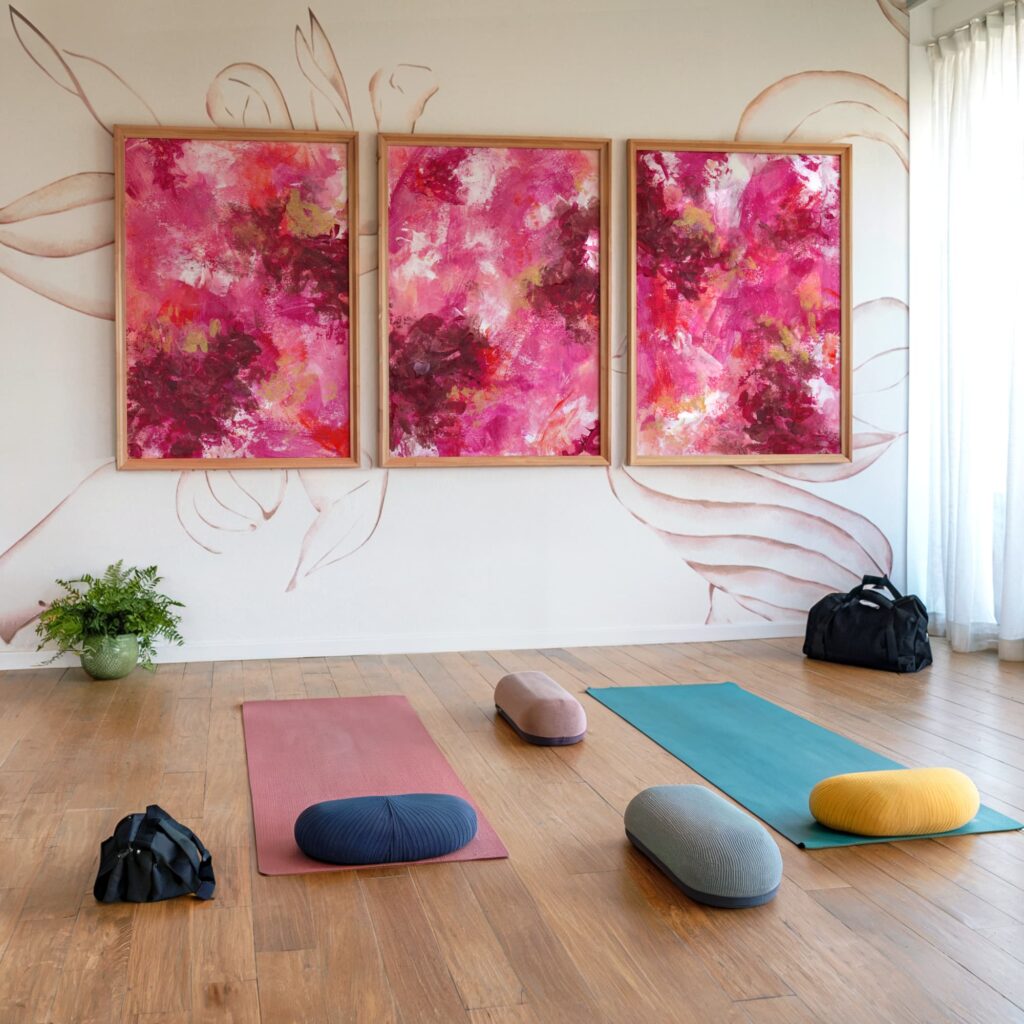
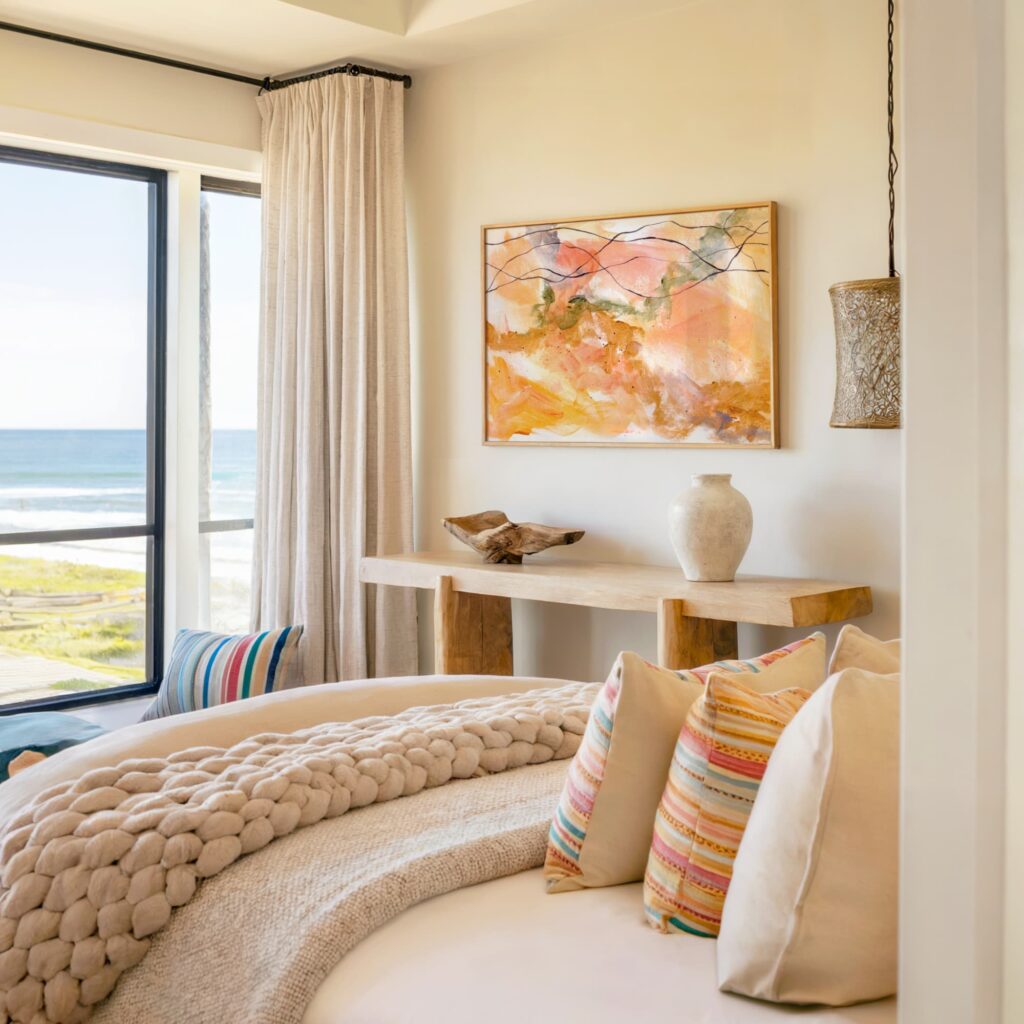
How to Design Your Own Healing Environment
You don’t need to be an interior designer to create a mindful, healing space. Start simple.
-
-
Notice. Where in your space do you feel tension? Where do you breathe easier?
-
Ask. What do you need more of? Calm? Energy? Permission to feel?
-
Choose. Bring in art that resonates, not that just “fits the theme.”
-
Leave space. Don’t clutter your walls. Let each piece breathe.
-
Evolve. As you grow, your needs shift. Let your environment shift too.
-
Healing spaces aren’t about perfection. They’re about honesty.
Art as Daily Mindfulness Practice
Mindfulness isn’t a once-a-day ritual. It’s a way of living. Art helps weave that practice into your everyday life.
Every time your eyes land on a piece that resonates, it’s an invitation: slow down, breathe, return. That’s mindfulness in action. Not effortful. Not forced. Just the gentle pull back into presence.
Your art becomes your practice partner. Not just something you walk past, but something that continually calls you back to yourself.
The Future of Healing Environments
We’re only just beginning to understand how much our environments affect us. The future will look different:
-
-
Workplaces designed for mindfulness, not just efficiency.
-
Cities are investing in public art not just for tourism, but for mental health.
-
Hospitals treating art as medicine, not a luxury line in the budget.
-
Homes that reflect who we are emotionally, not just financially.
-
Art won’t be optional. It will be seen for what it always has been: a survival tool.
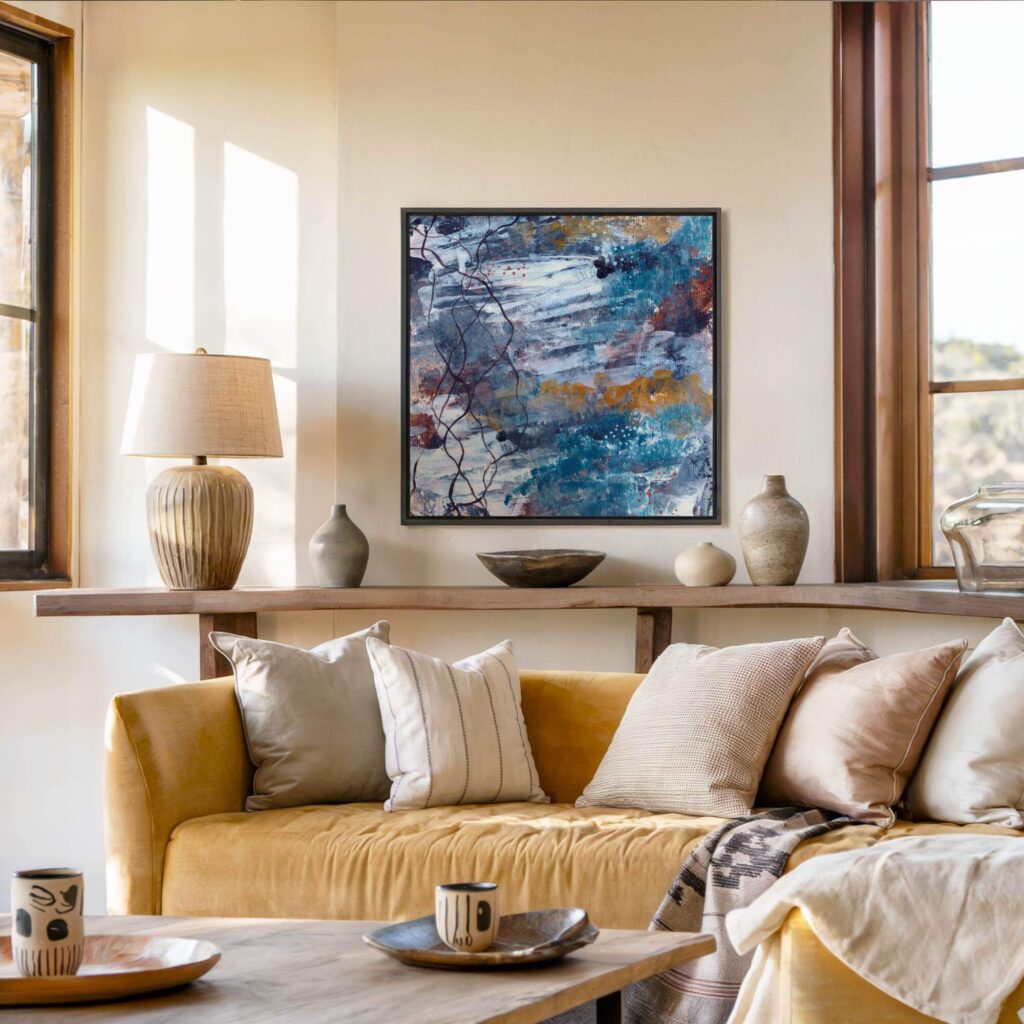
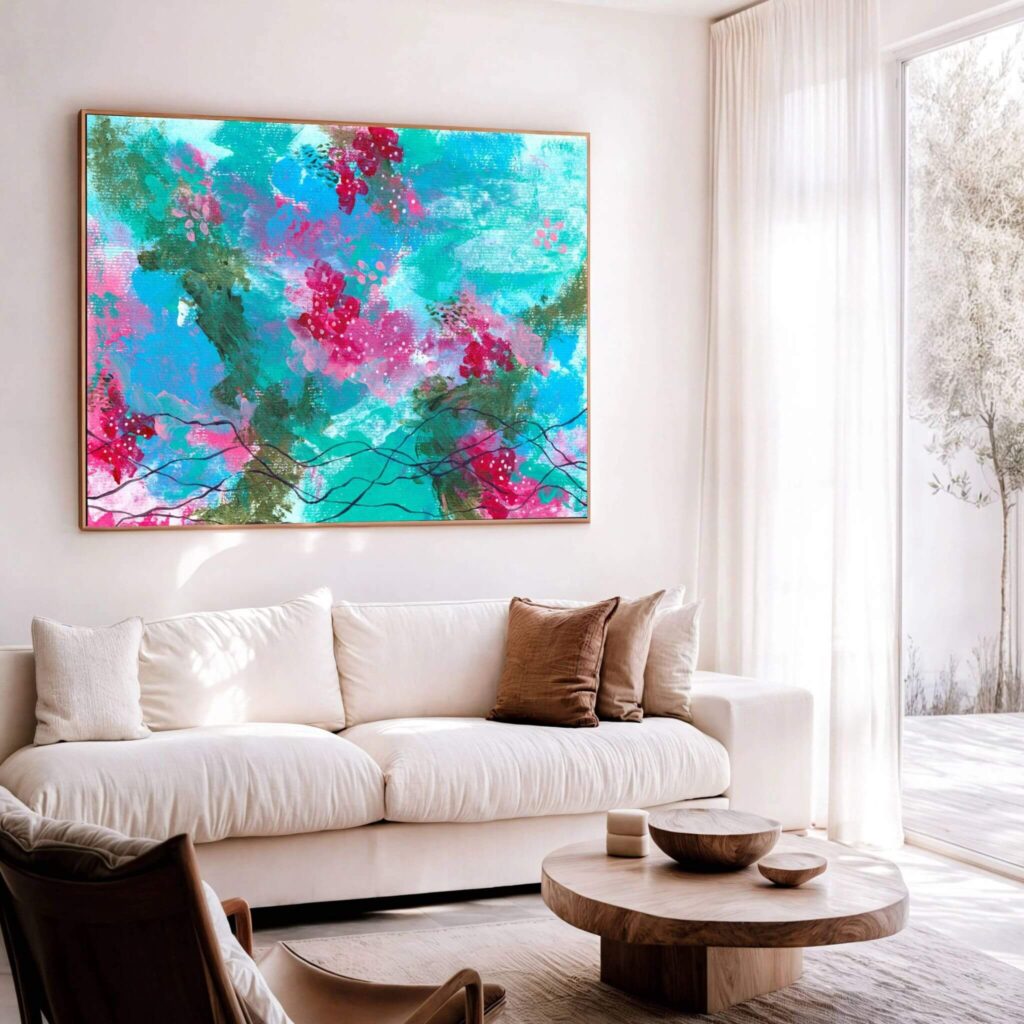
Final Thoughts
Art and mindfulness aren’t separate practices. They’re threads of the same fabric.
Mindfulness is the act of returning to yourself. Art is the anchor that makes that return possible. Together, they create environments that don’t just look good; they heal.
This isn’t about Instagram-worthy décor. It’s about survival. It’s about remembering stillness. It’s about creating spaces that let you be fully alive, fully present, and fully human.
Because in a world that constantly pulls you away from yourself, a healing environment isn’t a luxury. It’s a necessity.
If this resonates, begin with my book, titled Stillness Is a Weapon. It is a doorway into my private works.
